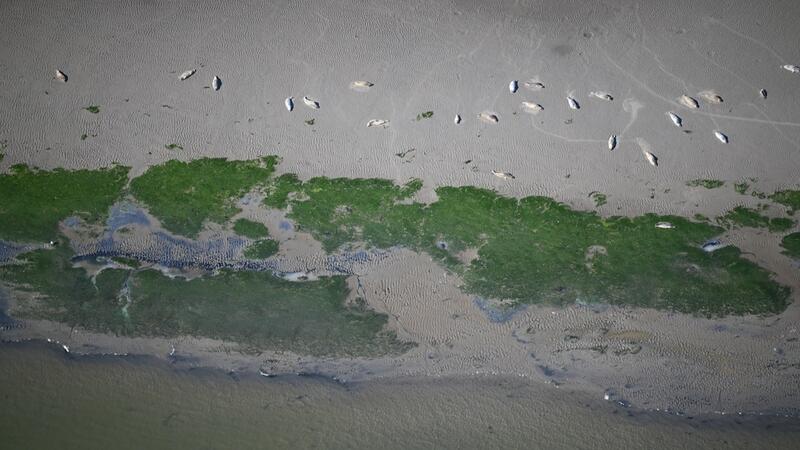Harbour seal counts in the Wadden Sea show decrease third year in a row

The harbour seal, a Wadden Sea icon, is continuously monitored in the transboundary Wadden Sea World Heritage Site of Denmark, Germany, and the Netherlands and the island of Helgoland. The yearly pup counts of 2023 revealed a 10% increase in pup numbers, while the yearly count of all harbour seals during the moult decreased by 4% compared to 2022. It is the third year in a row that the trilateral Expert Group Marine Mammals has observed a decline in total harbour seal numbers. It is not yet clear which factors are causing the negative trend.
In June, 9,334 pups were counted in the Wadden Sea compared to the 2022 count of 8,514 pups. An increase was observed in three Wadden Sea subregions. In Denmark, pup numbers increased by 23%, in Schleswig-Holstein by 12%, and in the Netherlands by 18%. In Lower Saxony and Hamburg, however, a decrease of 5% was noted. No pups were counted on Helgoland. The development of the next years will show whether the pup numbers will begin to decrease following the trend witnessed in the moult counts.
The moult counts in the Wadden Sea area in August 2023 accounted for the lowest numbers observed since 2010. In total, 22,621 harbour seals were counted. Numbers dropped in all areas, except for Lower Saxony and Hamburg, where an increase of 17% was recorded to 5,639 seals. In Denmark, seals numbers decreased by 19% to 2,268 seals. In Schleswig-Holstein 7,936 were counted, constituting a decrease of 5% compared to 2022. In the Netherlands 6,706 seals were counted, 11% less than in 2022. On Helgoland, 72 seals were counted compared to 98 in 2022 (-27%).
“With this sustained decrease in counts, we can now be rather confident that the population is decreasing”, says the report’s lead author Anders Galatius, University of Aarhus. “It would be pertinent to look into the potential causes, among which are habitat degradation, food availability and the increasing number of grey seals in the area.”
The numbers of harbour seals counted during the moulting season have stagnated since 2010, and the last three years counts have shown a decrease. Various factors may have contributed to this decline by causing higher mortality and behavioural changes. These could include degradation of habitat and disturbance in the Wadden Sea or offshore (i.e. increased human use for fisheries or shipping or wind farms) and competition for resources with fisheries or other marine predators for food and space. Also, direct mortality due to by catch or predation could play a role. Further research is needed to determine the relative impact of these different factors.
Harbour seals are one of the top marine predators in the Wadden Sea. As part of the monitoring work conducted by the Trilateral Wadden Sea Cooperation, the trilateral Expert Group Marine Mammals coordinates the counts and harmonizes the data from across the Wadden Sea region. The harbour seal is trilaterally protected under the Agreement on the Conservation of Seals in the Wadden Sea (WSSA) concluded under the auspices of the UN Convention on the Conservation of Migratory Species of Wild Animals (CMS).
>>> Full report
